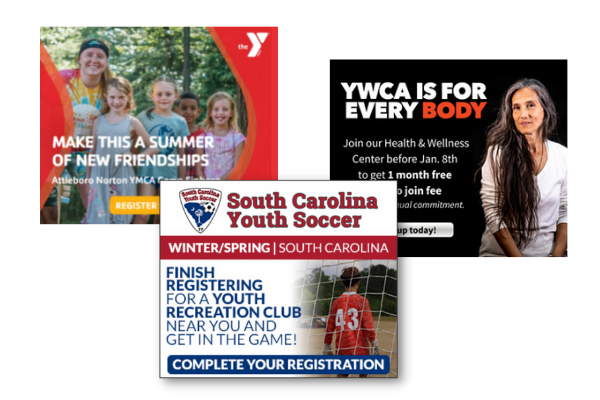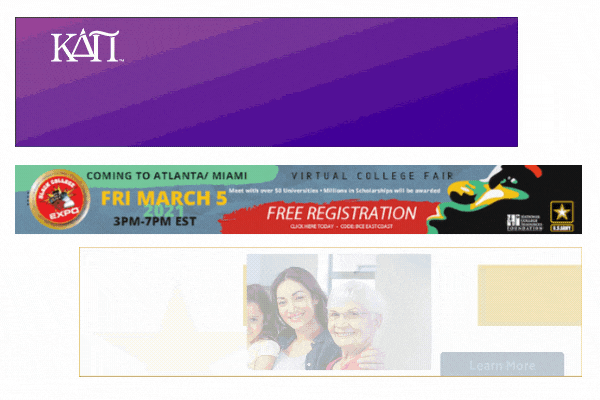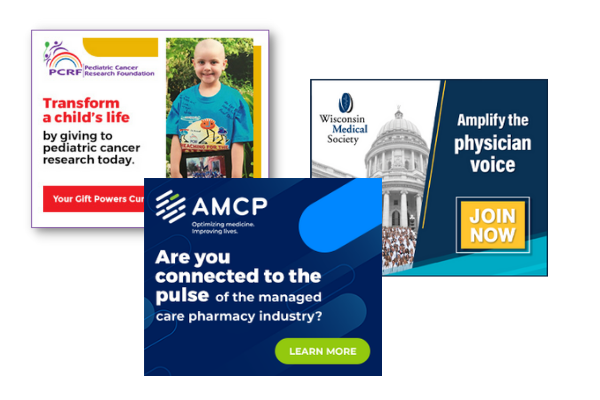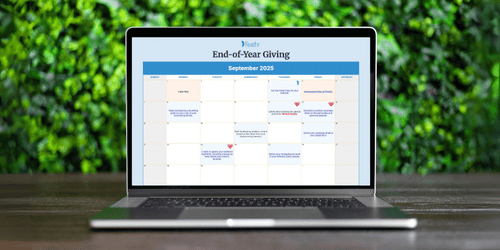
Nonprofit advertising examples: Inspiration for ad campaigns
If you’re in nonprofit fundraising, development, or communications, and you’re looking for ad examples, you’ve hit the mother lode!
You may have noticed ads following you across the web for the shoes you want or the next vacation you’re planning to take. It’s time nonprofits harness this same technology for good instead of just for profit!
In the past, nonprofits wrote off advertising as an exclusively for-profit activity, but there are exactly zero perks to being quiet about your mission. People need to hear about your work before they can become volunteers, ambassadors, or donors.
In other words, best-kept secrets don’t pick up supporters.
Nonprofit advertising vs. for-profit advertising
A Deloitte sponsored study, The CMO Survey, found that the marketers of today are doing more with less. But that doesn’t mean that they aren’t still doing a lot; 60.3% of respondents believe that a core component of their success stemmed from a differentiated marketing strategy.
As far as budgets are concerned, marketing technology is becoming a larger line item for successful teams. And the senior marketers on these teams are anticipating a “50% increase in their martech spend over the next 5 years,” according to The CMO Survey.
When Techsoup asked nonprofits in their Benchmark Report specifically about their spending on technology, they came away with these two insights:
- 86% of nonprofits agreed that martech provides organizations with better communication and collaboration among stakeholders.
- 76% believe that spending in technology enhances how an organization manages the data necessary for scaling fundraising.
Time is critical in the digital arena. Organizations that allow competitors to outpace them should expect not to raise as much or to become out of touch with their audience.
Nonprofits may not be able to spend on par with the largest for-profit organizations, but they must compete with their peers, who have recently seen the light.
Ad examples by cause
Below, we’ve listed different causes in alphabetical order. All the organizations we’ve highlighted deserve to grow, and we’re so happy to have been able to work with each of them, spreading the word.
Animal rescues
I’m not trying to minimize the work done at rescue shelters, but I am going to say that when building ads, they have a paw up on the competition. Just find the cutest picture of a dog and you’ve found your next ad.
Do be careful with the copy, though. You want to tug a little on hearts but not everyone is ready for a tear jerker while they’re skimming the news or doing some light online shopping.
-gif.gif)
Example ads in clockwise order from: The Humane Society of North Central Florida,
The Humane Society of Southern Arizona, and Houston Pets Alive
Performing art nonprofits and museums
Nonprofits in the arts often have difficulty with funding because opera or ballet have a hard time building messaging with a sense of emotional urgency.
But theaters, museums, and art galleries all have something truly valuable to offer, so lead with the upcoming play, the seasonal exhibition, or the current artist on display.
One strategy that helps art nonprofits is targeting different audience segments. Follow up with young parents on children’s programming or college students with something they could turn into a date.
-gif.gif)
From left to right: The Cade Museum, Woodlands Center for the Performing Arts, and OZ Arts
Camps, fitness, and community centers
Playing on a team or going to a summer camp may be the first experience where a child feels like they belong. And even adults need a gym or place to go to build friendships while meeting their health goals.
There’s an aspect of self-growth in all these programs, which you should include in your messaging, but what might be even more important is the community formed around these activities.
I’m always more successful at hitting goals when I have positive people around me pushing me forward, so make sure to highlight the relationships that people can form at your camp or community center.

In clockwise order: The YMCA of Attleboro, The YWCA of Asheville and Western North Carolina,
and the South Carolina Youth Soccer Association
Education
The education space is highly competitive, which makes it even more important to cut through the noise. As a nonprofit in the field, it’s key to communicate the social value that you’re offering along with your expertise.
If you’ve read any of the above sections, you may have already seen this strategy highlighted: it’s essential that you segment your audience, targeting donors with one message, volunteers with another, and clients with yet one more. They’re probably all very different groups, which means that you don’t want to cross signals.

From top to bottom: Kappa Delta Pi, National College Resources Foundation,
and California Retired Teachers Association
Environmental activism
Everyone should care about our planet, but make sure to be intentional with your messaging.
For someone who’s already invested in environmental activism, reach out to them about volunteering or giving. But for someone who might not be ready to give or join a protest, something educational or a push to visit a National Park could be the place to start.
Segmenting your audience and knowing the giving patterns of your donors is as essential as design — if not more important! Make sure you’re getting the right message to the right person at the right time.
-gif-1.gif)
In clockwise order: Pennsylvania Association for Sustainable Agriculture,
Sea Turtle Conservancy, and Greening Youth Foundation
Healthcare
Similar to nonprofits in the education space, healthcare is highly competitive, so it's key to highlight what differentiates your organization from the rest. Taking the right angle with your message is essential in grabbing and keeping your audience's attention.
And like animal rescues or social service nonprofits, be careful to walk a fine line between making an emotional tug and breaking someone's heart. Think about how and when potential donors will first interact with your ad and shape it into a positive experience: this is an opportunity for them to make a difference in a life!

In clockwise order: Pediatric Cancer Research Foundation, Wisconsin Medical Society,
and Academy of Managed Care Pharmacy
Religious nonprofits
A lot of nonprofits are driven by their faith. Some decide not to make this central to their messaging while others put it front and center.
Even if you are vocal about your faith, it can be valuable to segment your audience into different groups by testing different messaging. Young moms might be moved by different messaging than a retired couple, and even people who have a shared faith often express it in very different ways.
But never shy away from what makes your organization tick. It’s better to find a smaller team of supporters that are sold on your mission rather than collecting a much larger group that isn't fully on board.
-gif-2.gif)
From left to right: Christians for Biblical Equality, Camp Eagle, and International Justice Mission
Social services & food banks
For all the progress we've made over the last few thousand years, we still have a long way to go to serve the homeless, the hungry, and the poor. Everyone knows how important these causes are, but you don't want to overwhelm possible supporters with how emotionally difficult the work is.
The Food Bank for Central and Northeast Missouri used Feathr to geofence new audiences, retarget website visitors, and tell their story through highly targeted and well-timed emails. After building and preparing audiences through earlier campaigns, one email brought in over $15,000 in donations!
This is a prime example of the results that can come from running multi-channel marketing campaigns that build on each other.
But when it comes to building the ads, be careful with the design and messaging as people may be as frustrated as you are that these problems persist.
One of the hardest things about crafting ads in this space is that you need your messaging to have an emotional pull but you also want to stay as optimistic as you can.
-gif-1.gif)
In clockwise order: Hope And A Future, Grace, and FIND Food Bank
Where to start with ad campaigns
Now that you’ve seen examples of great nonprofit ads — and you’ve seen that it’s not that hard — it’s time to launch your own campaign. There are ad campaigns that can target people at locations like a convention or a college campus while others follow the people who never finished sending in their donation.
Below are five of the most popular ad campaigns that you can start running today, bringing in new audiences or boosting your current donation drive:
Retargeting
It’s more than frustrating if you’ve followed a donor all the way to the final form, but they don’t click submit — this is called a donation abandonment, and one of the highest converting retargeting campaigns targets this group specifically. They might have been distracted by an incoming call or simply left their wallet on the other side of the house. Either way, simply reminding these potential donors of where they left off may be all that’s needed to complete the donation. If there’s another group that’s landed on your event or learn more page, you can target these individuals with different messaging, pulling them back to the place where they expressed interest.
Geofencing
By tracking a person’s GPS, RFID, or Wi-Fi locations, geofencing campaigns can target potential supporters in a specific area. If there’s a convention coming up about your cause, you can get in front of that whole audience. Or if you’ve found that local churches get excited about your cause, you can pick a few larger congregations in your city.
Affinity Targeting
We believe that first-party data is almost always better than third-party data. But when you don’t have enough first-party data available, third-party data is much better than no data. With Affinity Targeting campaigns, you can use data inside Feathr’s platform to jumpstart your initiatives, targeting specific industries or audiences from demographics you believe your messaging will connect powerfully with.
CRM Retargeting (Email Mapping in Feathr)
If you have great first-party data like volunteer, supporter, or donor email lists, and you’re trying to find creative ways of engaging these already emailed groups, look no further! With an email mapping campaign, you can serve ads to the people you’re already sending emails to. Or you can even email unsubscribers. They may not have space in their inbox for another newsletter, but a well-timed ad may be the perfect touchpoint.
Search Keyword
We all use search engines every day. And because of this it’s gotten more and more expensive to serve ads directly through Google or Bing. But what if I told you there was a cheaper way to engage with these exact groups? With a Search Keyword campaign, instead of showing up immediately in the search results, you can display your beautiful ads to the people who recently searched for your organization. You know that they’re interested in what you’re doing; now all you have to do is tell them the whole story.
As you can see, it’s not hard to start a marketing campaign that could make a huge impact on your organization’s returns.
Even if your company is driven by something much more important than profit, it’s still important that you have the margins to grow. This will help ensure that you can make an even bigger impact tomorrow and the years ahead!
You May Also Like
These Related Stories

5 digital marketing KPIs to track during your campaigns

How to re-engage lapsed donors with email mapping campaigns
